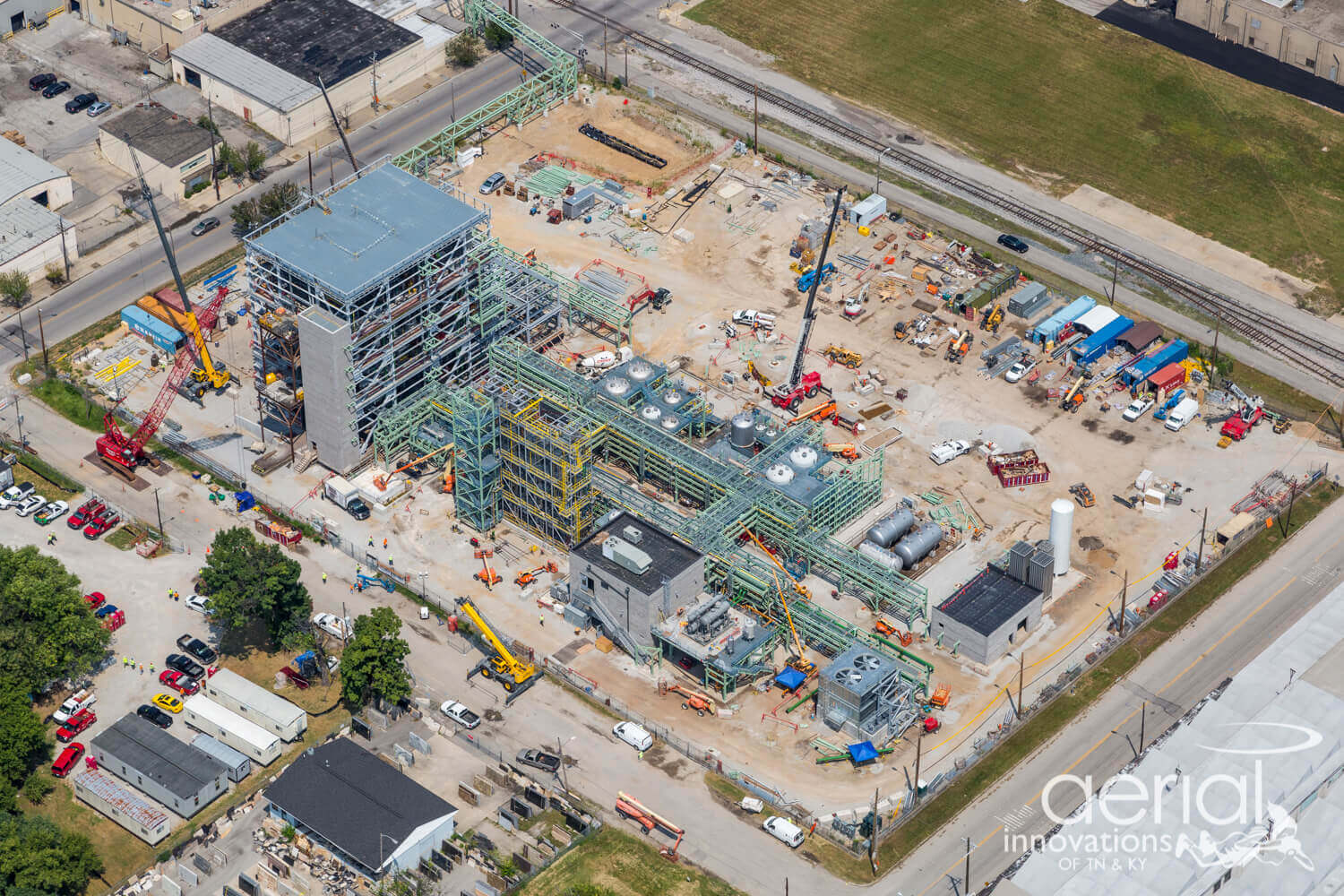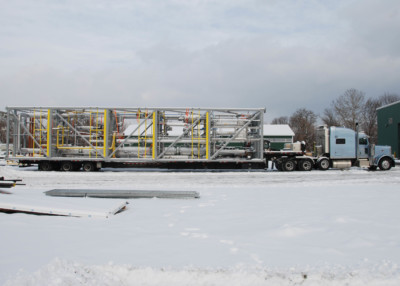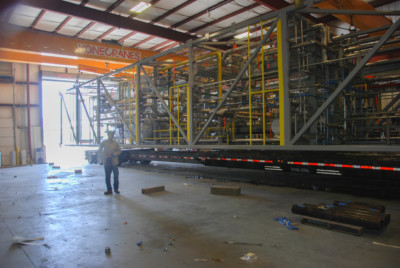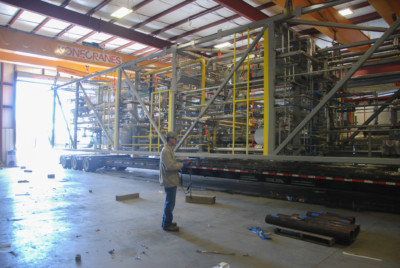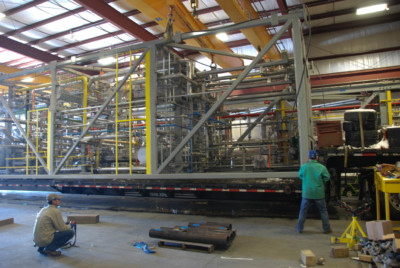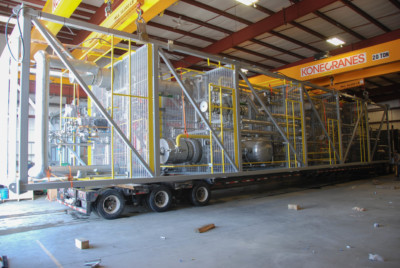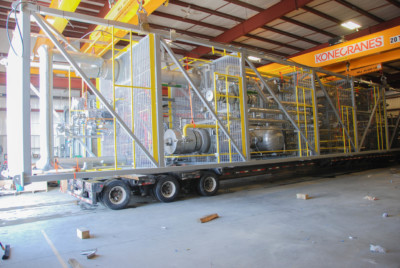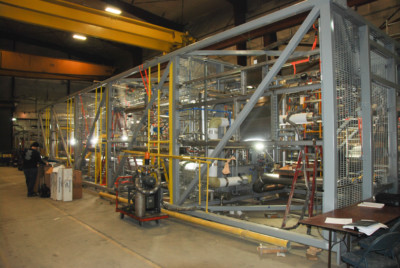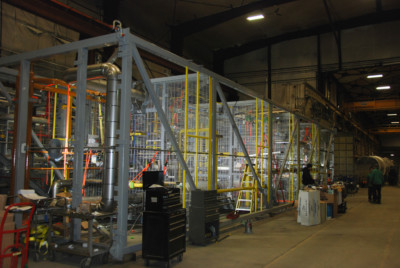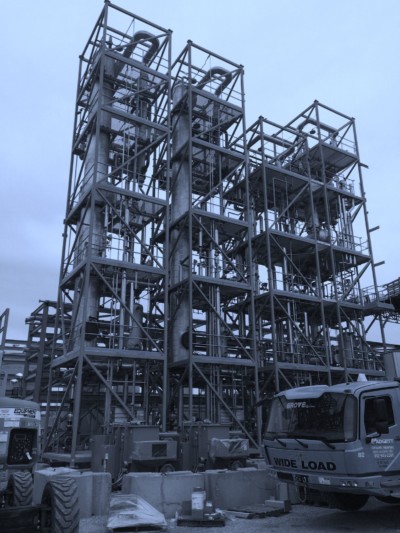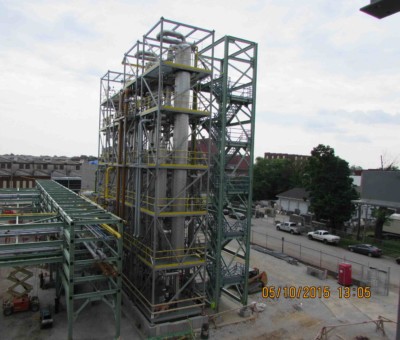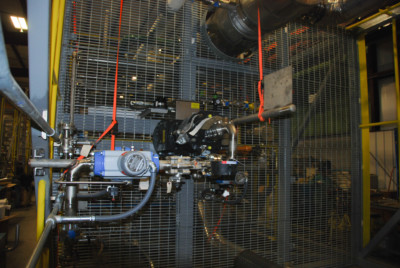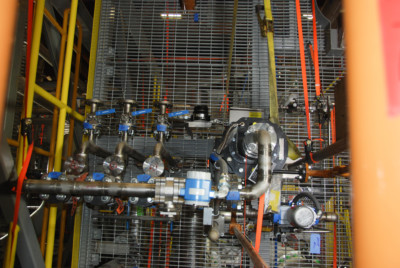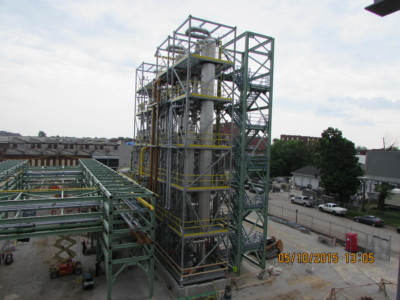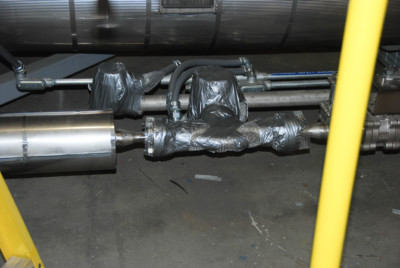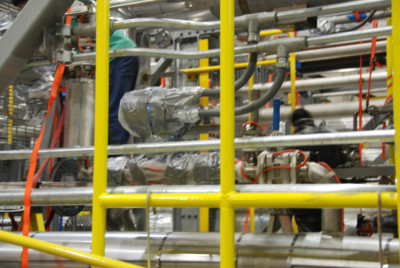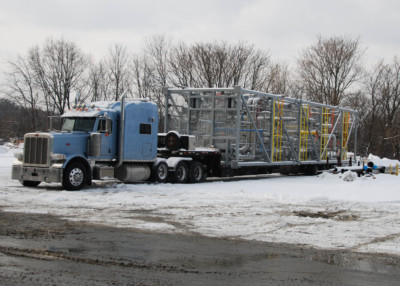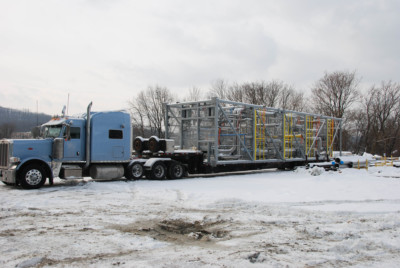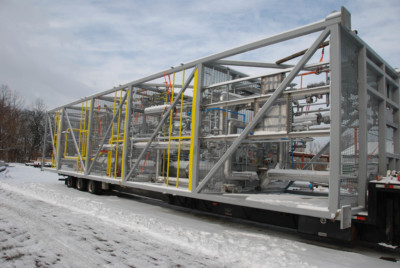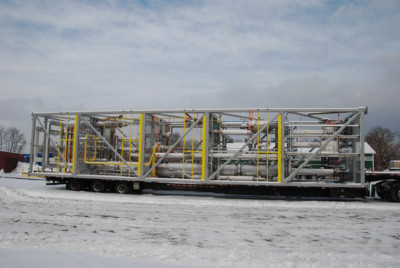PROBLEM
There were some design challenges associated with this project. For example, the system needed to prevent the entry of water or air, and the process temperatures in the distillation columns and reboilers needed to be kept below a specific temperature to minimize fouling.
Additionally, a very aggressive schedule was required by the client. As a result, the modules designed by Koch Modular were first to arrive at the plant site, a year before planned start-up. A hydraulic assessment of the equipment and the system piping, using liquid (usually water), is typically performed to test for mechanical integrity and leaks. However, because the ingress of water was to be avoided at all cost, Koch Modular engineers had to devise alternative solutions to test the integrity of the equipment and piping.
SOLUTION
Koch Modular provided two modular distillation systems, Systems A and B, for the recovery and regeneration of hexane, toluene, TiCl4, and silicone oil from various feed streams identified by the client.
System A consists of two distillation steps designed to process a hexane stream containing 7.4 wt% silicone oil. The first step is an atmospheric distillation to recover the bulk of the hexane. The second step is a vacuum distillation to recover the remaining hexane, while keeping the temperature of the silicone oil bottoms below 149°C. A distillate hexane product, which is a combination of the distillate streams from both steps, containing less than 80 ppm silicone oil in hexane is recovered. A bottoms stream containing silicone oil with less than 0.3 wt% hexane is also produced.
System B is designed to process a crude catalyst solvent stream containing approximately 38 wt% hexane, 19 wt% toluene, 41 wt% TiCl4, and 1 wt% TiCl4byproducts.
The recovery process consists of three distillation steps, all of which operate under vacuum. The first step recovers the hexane with less than 2000 ppm toluene, as a distillate product. The second step recovers a 99 wt% toluene stream, with less than 0.6 wt% hexane and less than 1 wt% TiCl4. The last step recovers a 99.2 wt% TiCl4stream containing less than 0.8 wt% toluene.
RESULTS
The modules were delivered within budget and schedule a year before planned start-up. The system is currently running satisfactorily with no reported issues.
Koch Modular engineers worked with the aggressive schedule by maintaining an aggressive pace of design work and close cooperation with the client. Although the hydraulic equipment could not be assessed using water, pneumatic testing using air was performed instead. Ultimately, the recovery of solvents toluene and hexane minimizes negative environmental impact that solvent disposal is responsible for and reduces operating costs.
